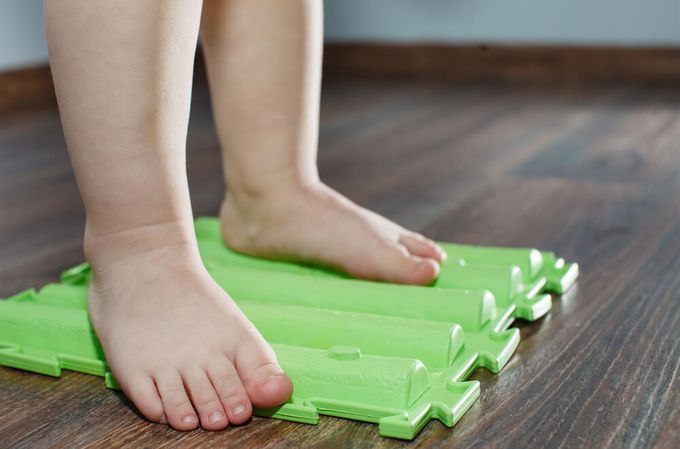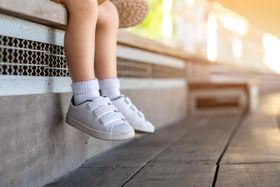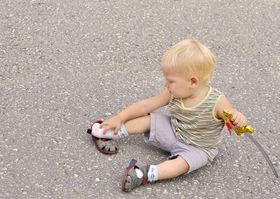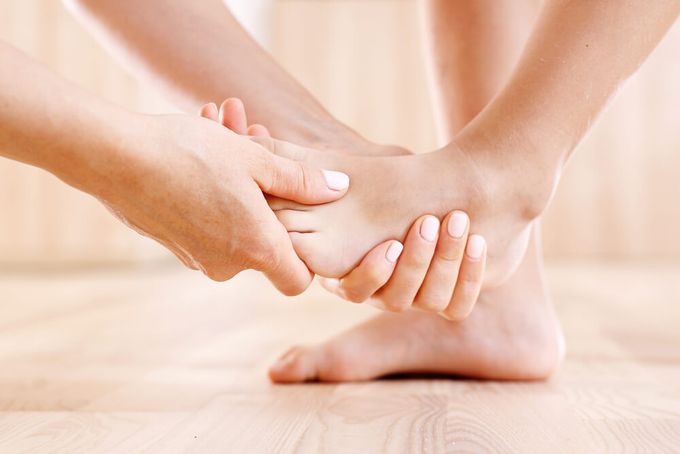Children's Heel Pain: Common Causes and Effective Solutions
Learn how unresolved heel pain can impact your child's well-being and discover essential tips for maintaining happy and healthy feet.
Published April 14, 2024

Heel pain in children, though often overlooked, is surprisingly common. Research suggests that one in every twelve kids suffers this discomfort in the heel. If left untreated, it can affect their gait and posture, leading to musculoskeletal imbalances and increasing the risk of injuries later in life. That's why it's important to address this pain early to ensure your child's overall well-being and mobility.
Common Causes of Heel Pain in Children
Children may experience heel pain due to various factors, including physical activity, growth spurts, and biomechanical issues like flat feet or high arches. Common conditions associated with heel pain include:
- Plantar fasciitis: This inflammation of the ligament running along the sole can cause sharp, stabbing pain in the heel. It is often worse in the mornings.
- Achilles tendinitis: Overuse of the Achilles tendon, the tight band that connects the calf muscles to the heel bone, can lead to pain and tenderness.
- Heel spurs: These bony growths form on the underside of the heel and may cause sharp and stabbing pain.
- Sever's disease: This condition affects the growth plate at the back of the heel bone, typically in children aged 8-14. It can cause pain and tenderness, which worsens after activity.
» Follow these tips on how to prevent children's foot injuries
How to Treat Children's Heel Pain
In many cases, you can treat your child's heel pain at home. Here are some effective solutions:
- Rest and activity modification: Give the aching heel a break from activities that can aggravate the pain. Choose low-impact alternatives like swimming or cycling.
- Ice and heat: Apply ice packs for 10–15 minute periods to reduce inflammation and pain. After 72 hours, heat therapy will be more helpful.
- Stretching and strengthening exercises: Gentle stretches and targeted strengthening exercises can improve flexibility and strengthen supporting muscles, reducing the risk of recurrence.
- Supportive footwear: Proper fitting shoes with good cushioning and arch support will promote healing and prevent further injuries.
Note: If your child's heel pain persists, it's best to consult a healthcare professional to address possible underlying foot conditions.
» Discover the best shock-absorbing shoes for active kids
Impact of Heel Pain on Children
Unresolved heel pain can affect their well-being in the following ways:
- Reduced mobility: The limping and discomfort can lead to altered gait patterns to avoid putting weight on the painful heel. This can limit their ability to participate in activities they enjoy.
- Sleep disruption: The constant ache can disrupt sleep patterns, affecting their energy levels and concentration during the day.
- Emotional well-being: Frustration and anxiety can arise from persistent pain, altering their mood and overall quality of life.
Step Towards Pain-Free Play: The Importance of Proper Footwear
One simple yet effective way to address and prevent heel pain with conditions like plantar fasciitis is by ensuring your child has proper footwear. Investing in shoes that provide adequate support and stability for growing feet can significantly reduce the chances of discomfort and injuries.
First Walkers is an excellent choice, offering high-quality shoes for foot development. With options that accommodate orthotics and prioritise comfort and durability, they ensure that children's feet receive the support they need as they grow and explore the world around them.
Related Articles

10 Best Kids Shoes for Stability: Support for Hypermobile Feet
Amy Elder
September 24, 2025

9 Best Hiking Boots for Toddlers: Ensuring Comfort and Safety
Jasrah Javed
December 6, 2024

How to Measure My Kid’s Feet and Choose the Right Shoe Size
First Walkers
June 10, 2025

5 Expert Tips to Break In New Kids' Shoes (No Blisters!)
George Croft
September 26, 2025

5 Best Closed Toe Sandals for Your Baby
Jasrah Javed
September 21, 2024
Related Posts
Jonathan Coom
Should You Pop Your Child's Foot Blisters?
Babafemi Adebajo
Why Do My Toddler’s Feet Look Yellow?
Babafemi Adebajo
Do You Need a Prescription for Orthopaedic Shoes?
Benjamin Aduwo
Can Kids Get Plantar Fasciitis?
Dr. Leah Alexander

